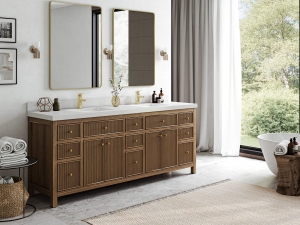Creating work environments that foster wellbeing and productivity
With employee performance so closely tied to health and wellbeing, the design of office space is no longer a secondary consideration. Modern businesses are realizing that a thoughtfully designed workplace can directly support mental health, boost team morale, and improve overall productivity.
What the Numbers Show
Mental health is both a workplace and an economic challenge in the U.S. The National Safety Council reports that mental health issues cost U.S. employers an estimated $47.6 billion each year in lost productivity due to absenteeism and presenteeism.
The National Institute of Mental Health estimates that nearly 1 in 5 U.S. adults (57.8 million people) live with a mental illness. Anxiety disorders are the most common, affecting over 19% of the population each year.
Considering the average American spends roughly 90,000 hours at work over their lifetime, the case for office environments that actively promote mental wellbeing is clear.
Office Space and Mental Health
An office environment should reduce, not contribute to, stress and anxiety. Beyond workplace culture, physical design elements strongly influence how supported, motivated, and engaged employees feel on a day-to-day basis.
The best workspaces achieve a balance between collaborative zones that spark teamwork and quiet areas that support deep, focused work without constant interruption. This balance is especially important in industries that rely heavily on both group creativity and individual productivity.
Modern office planning increasingly includes flexible layouts, adaptable furniture, and acoustic solutions that minimize noise distractions, factors that can directly reduce workplace stress. Companies that invest in these design elements often see improvements in both morale and employee retention.
Natural Light, Green Space, and Breakout Areas
Biophilic design, bringing elements of the natural world indoors, has become one of the most effective ways to support employee wellbeing. Access to natural light is particularly impactful. A Cornell University study found that employees working in offices with abundant natural daylight reported an 84% reduction in eyestrain, headaches, and drowsiness, leading to healthier and more energized teams.
Integrating green space and plants into the office environment provides an additional layer of calm, helping lower stress levels and enhancing overall satisfaction. Similarly, breakout areas designed for informal conversation or short breaks—offer opportunities for employees to recharge mentally, fostering both creativity and stronger workplace relationships.
What We’re Seeing in the Market
According to Teresha Aird, CMO of Offices.net:
“We’re seeing more clients prioritizing natural light, green spaces, and breakout areas over cost. Businesses now recognize that if a work environment is conducive to better mental health, teams perform better and overall productivity rises.”
Rethinking Office Design
Employers are increasingly reimagining how space is used, with wellness in mind. Initiatives include:
- Breakout zones for collaboration and socialization
- Quiet pods for deep, focused work
- Wellness or meditation rooms
- Fitness or movement-friendly spaces
These design decisions show employees their well-being is valued, which directly strengthens engagement and retention.
The Future of Workplace Design
As hybrid and flexible work patterns continue, office spaces must evolve to remain relevant and supportive. A well-designed office that nurtures both mental health and productivity is no longer a luxury; it’s a business necessity.
Office space brokerage can help companies find the perfect, health-forward office space anywhere in the world that not only meets functional needs but also fosters healthier, happier teams.






